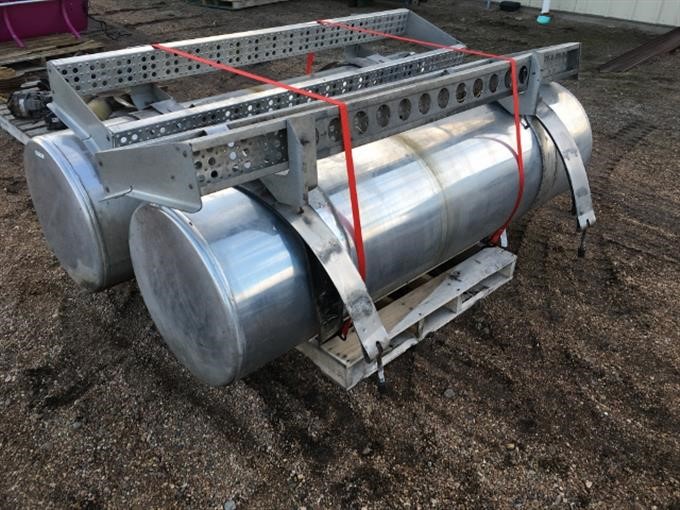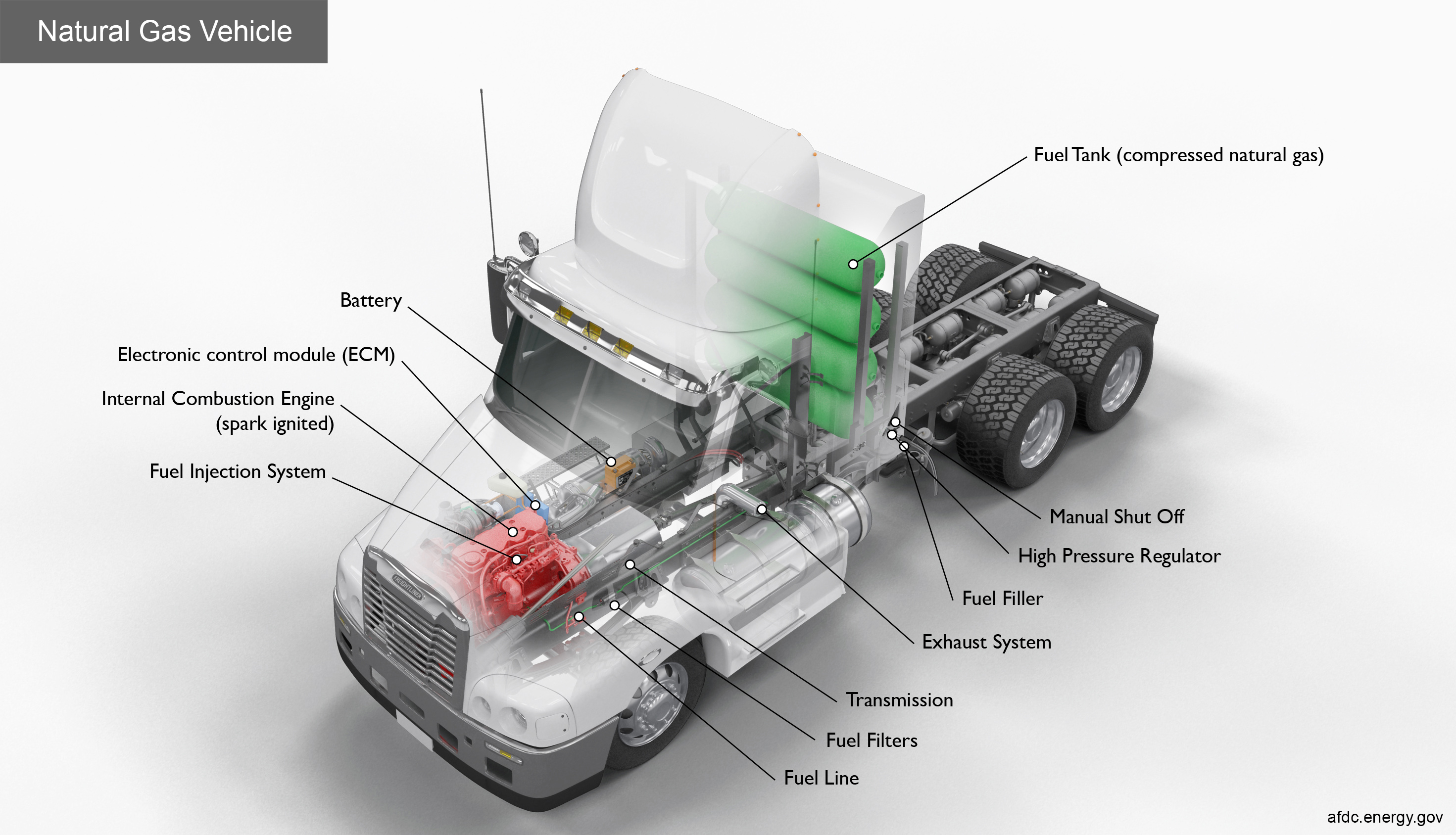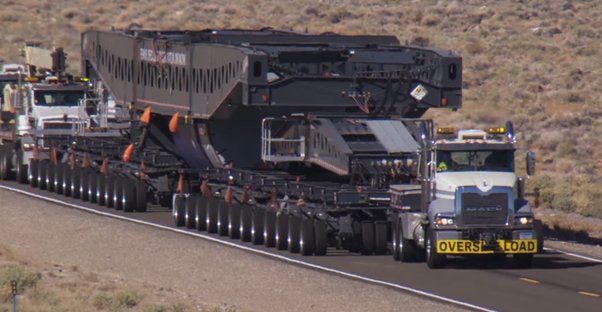
A typical semi-truck fuel tank is about 100 – 150 gallons in capacity. The size can vary depending on the make and model of the truck.
Semi-truck fuel tanks come in various sizes, with the most common being around 100 to 150 gallons. These tanks allow long-haul trucks to cover substantial distances without frequent refueling, thereby optimizing transportation efficiency. The size and design of semi-truck fuel tanks are crucial factors in determining the truck’s range, affecting how often it needs to stop for refueling.
As a result, understanding the capacity and dimensions of these fuel tanks is essential for fleet managers and truck operators to ensure smooth and efficient transportation operations. We will explore the specific dimensions of semi-truck fuel tanks and their significance in the transportation industry.
Navigate As You Want:
1. Importance Of Fuel Tanks In Semi Trucks
Semi truck fuel tanks play a crucial role in ensuring long-haul journeys. With varying sizes, these tanks accommodate ample fuel to sustain the truck’s operation over significant distances.
Importance of Fuel Tanks in Semi Trucks: The fuel tank is an essential component of a semi truck as it ensures a smooth and uninterrupted operation for long distances. In terms of storage capacity100 to 300 gallons. This large capacity allows for prolonged journeys without the need for frequent refueling, improving overall efficiency. The operational efficiency of a semi truck is greatly influenced by its fuel tank, as a larger tank means fewer refueling stops, resulting in time and cost savings. Moreover, the size of the fuel tank can impact the truck’s weight distribution and handling. Therefore, choosing the right fuel tank size for a semi truck is crucial to maximize productivity and minimize downtime.2. Factors Affecting Size Of Fuel Tanks
The size of a semi truck fuel tank is influenced by several factors. Distance and frequency of travel play a crucial role in determining the tank size, as trucks covering longer distances may require larger tanks to reduce refueling stops.
Additionally, the engine type and fuel efficiency directly impact the tank size. Trucks with less fuel-efficient engines may need larger tanks to compensate for higher fuel consumption.
Moreover, the load capacity of the truck affects the required tank size. Trucks carrying heavier loads may need larger fuel tanks to ensure they can travel longer distances without refueling.
3. Average Size Of Fuel Tanks
Average Size of Fuel Tanks: Semi truck fuel tanks vary in size based on the type of truck. Commercial trucks typically have larger tanks, often holding 120 to 150 gallons of fuel. Heavy-duty trucks may have even larger tanks, ranging from 150 to 300 gallons. Customization options also play a role, as some semi trucks are equipped with auxiliary fuel tanks, allowing for increased fuel capacity.

Credit: www.bigiron.com
4. Implications Of Fuel Tank Size
The size of a semi truck fuel tank has important implications in various aspects, including range and refueling stops, cost considerations, and environmental impact. A larger fuel tank allows for a greater range, reducing the need for frequent refueling stops on long-distance journeys (4.1 Range and Refueling Stops). This not only saves time but also increases productivity for truck drivers and transportation companies. However, it is important to consider the cost implications of a larger fuel tank, as it can add to the initial purchase cost and weight of the truck (4.2 Cost Considerations). Additionally, a bigger fuel tank may result in increased fuel consumption, thereby impacting the environment in terms of emissions (4.3 Environmental Impact). Truck manufacturers and operators need to strike a balance between fuel efficiency, range, and cost when determining the ideal size for a semi truck fuel tank.
5. Innovations In Semi Truck Fuel Tanks
5. Innovations in Semi Truck Fuel Tanks
One of the advancements in semi truck fuel tanks is the use of lightweight materials to increase fuel efficiency. Lightweight materials, such as aluminum and composites, reduce the overall weight of the fuel tank without compromising its strength and durability. This leads to improved fuel economy and reduced emissions.
Another innovation in semi truck fuel tanks is the exploration of alternative fuel options. With the increasing focus on sustainability, many truck manufacturers are experimenting with alternative fuels like natural gas and electric power. These fuels offer reduced emissions and a greener alternative to traditional diesel fuel.
Furthermore, smart monitoring systems have become a crucial part of semi truck fuel tanks. These systems use sensors and real-time data to monitor fuel levels, detect leaks, and optimize fuel consumption. With the help of advanced software and technology, truck drivers can have better control over their fuel usage and minimize waste.

Credit: afdc.energy.gov

Credit: thermex-systems.com
Frequently Asked Questions Of How Big Is A Semi Truck Fuel Tank
How Big Is The Fuel Tank In A Semi Truck?
Semi truck fuel tanks can vary in size, but the average capacity is around 100 to 300 gallons. However, some tanks can hold as much as 500 gallons or more, depending on the specific needs of the truck and its intended usage.
The size of the fuel tank is crucial for long-haul trucks to ensure they can cover long distances without frequent refueling.
What Is The Fuel Efficiency Of A Semi Truck?
The fuel efficiency of a semi truck can vary depending on several factors, such as the engine type, load weight, driving conditions, and maintenance. On average, semi trucks can achieve around 5 to 8 miles per gallon (mpg). However, newer truck models and advancements in engine technology have improved fuel efficiency, with some trucks achieving up to 10 mpg or more.
How Long Can A Semi Truck Go On One Tank Of Fuel?
The distance a semi truck can travel on one tank of fuel depends on several factors, including the truck’s fuel efficiency, the size of the fuel tank, and the driving conditions. On average, a semi truck can travel between 400 to 800 miles on a full tank of fuel.
However, some trucks with larger fuel tanks and higher fuel efficiency can travel over 1,000 miles without refueling.
Conclusion
In summation, the size of a semi truck fuel tank can vary depending on the type of truck and its intended use. Freightliner Cascadia models typically have a fuel tank capacity of 100 to 150 gallons, while larger trucks such as Kenworth T680 can have tanks as big as 245 gallons.
Remember, understanding the fuel capacity of a semi truck is crucial for efficient and effective transportation operations.





